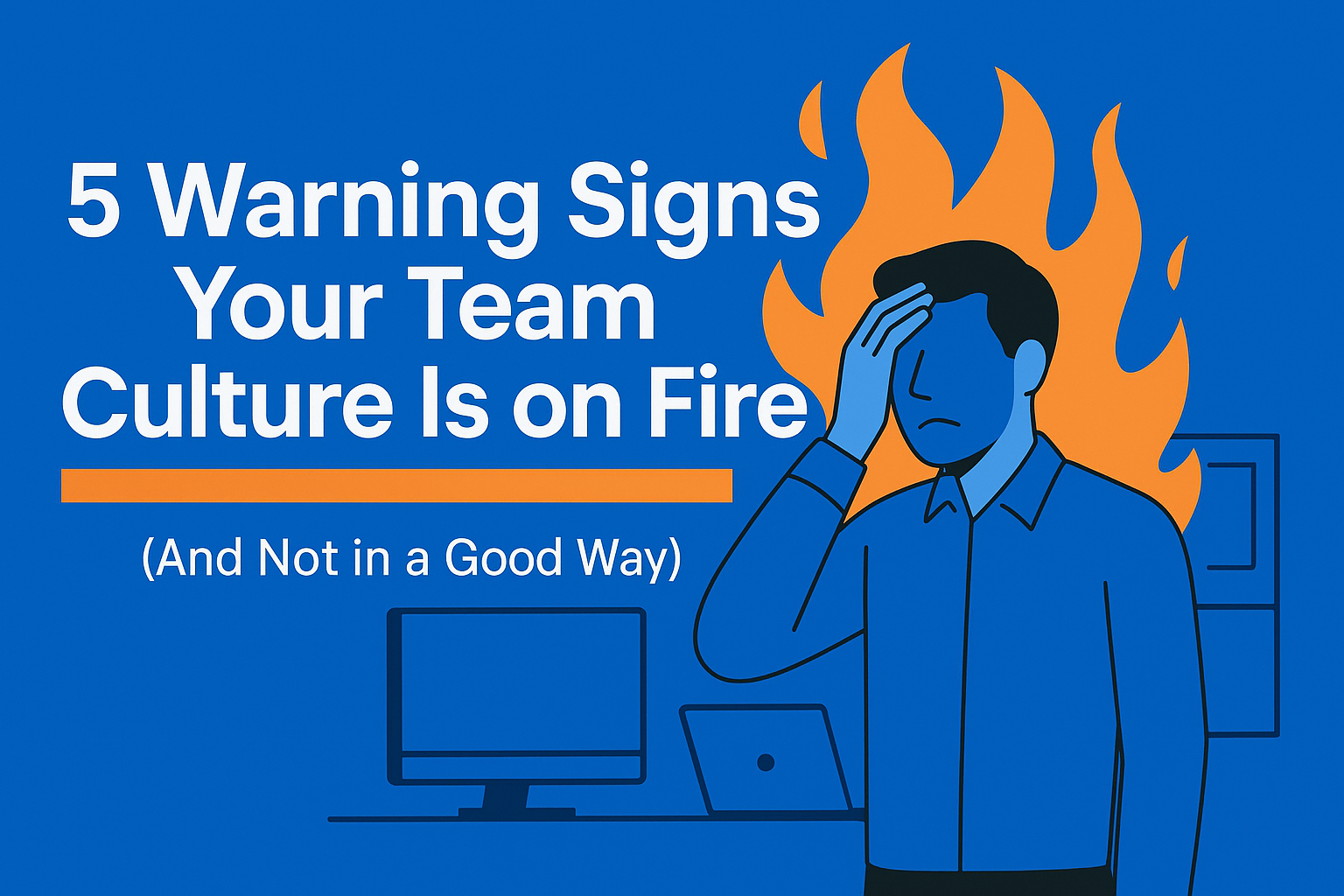Scaling a team? Here’s what no one tells you: Culture doesn’t die all at once.
It dies slowly—one “harmless” behavior at a time.
By the time you feel it in your P&L, it’s already infected every meeting, message, and decision.
These 5 red flags aren’t theory—they’re the precursors to culture collapse.
If you spot even one… pause everything and fix it fast.
1. Slack Is a War Zone
Collaboration has left the building.
You log in and it’s side-eye central: Snarky messages. Long threads with zero resolution. People cc’ing leadership just to prove a point.
Here’s the deal: When Slack becomes a place for scoring points instead of solving problems, trust is gone.
Your team isn’t aligned—they’re lawyering up. Every word is overthought. Every update is defensive.
And what gets lost?
Speed. Ownership. Innovation.
Slack should move things forward, not create digital drama.
The Fix: Stop pretending your team will “just work it out.”
2. You’re Mediating More Than Leading
You’ve become the in-house therapist.
“Hey, can we talk real quick?”
Translation: “Can you step in and fix a dynamic I’m too uncomfortable to address myself?”
When your leadership time is spent smoothing egos, clarifying conversations, or decoding subtext between departments—you’re not leading, you’re parenting.
And here’s the punch in the gut: You trained them to do this.
Every time you mediate instead of holding people accountable for solving their own issues, you reinforce the behavior.
The Fix:
Train your team to self-regulate.
Enforce a no-triangle rule: if someone has an issue, they take it to the source—not up the chain.
Build adults, not dependencies.
3. Feedback Feels Personal
You ask a simple question… and someone takes it as an attack.
Suddenly it’s not “Hey, can we tighten this process?”
It’s “Why don’t you trust me?”
Now you’re spending energy managing feelings instead of results.
This is the hallmark of a vulnerability vacuum.
If your team can’t receive feedback without flinching, you’ve lost your edge—and your culture’s about to flatline. Top performers crave clarity and correction. Toxic teams treat it like betrayal.
The Fix:
Model vulnerability. Share your own missteps. Normalize constructive tension.
And if someone still can’t handle it?
That’s not a team player—that’s an emotional liability.
4. Dead Weight Drags Down the A-Players
The top talent is disengaging.
They stop speaking up. They stop pushing. They start clocking in, coasting, clocking out.
Why?
Because they see you protecting mediocrity.
You think you’re being “fair.” What you’re actually doing is punishing excellence.
Every time you delay firing the underperformer, you send a message: Results don’t matter here. Standards are optional.
And the ones who could take your business to $50M?
They’re already interviewing somewhere else.
The Fix:
Audit your org for dead weight.
Who’s coasting? Who’s bringing down morale? Then act. Not next quarter. Now.
5. You’re Exhausted Managing Around Someone
Let’s talk about the one person you’re secretly building your entire company around.
You’ve redesigned workflows for them.
You’ve created special exceptions.
You’ve restructured meetings just so they “feel heard.”
This person is not a team member.
They’re a black hole for your leadership energy.
If you’ve built systems to work around someone’s limitations, you’re subsidizing their incompetence at the cost of your growth.
The Fix:
Face it. You’re afraid to fire them.
Afraid of the fallout, the transition, or your own guilt.
But if you’re building around them, you’ve already fired your standards. Reclaim them.
Here’s The Bottom Line:
This isn’t about being ruthless. It’s about being real.
A-players don’t leave companies.
They leave cultures that tolerate B-players.
The longer you let toxicity fester, the more it costs you—not just in morale, but in margin, momentum, and mission.



